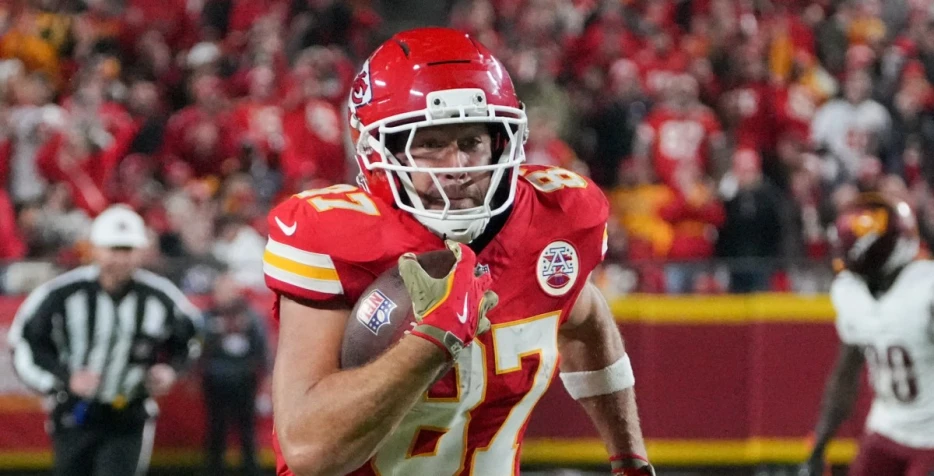
 Arrowhead Pride
Arrowhead Pride
In Monday night’s 28-7 win over the Washington Commanders, the Kansas City Chiefs’ three longest plays went for 38, 31, and 27 yards. All three shared one thing in common: each came off a play-action concept.
This has been something head coach Andy Reid has mixed into the offense more often in 2025 — and it’s smart.
Let’s see how Kansas City used it this week to create explosive plays against Washington.
On the opening drive, the Chiefs scripted a really nice play to get wide receiver Xavier Worthy open down the sideline.
Kansas City comes out in 12 personnel, putting one tight end on each side of the offensive line in a 2-by-2 look. The Chiefs go under center, prompting the Commanders to walk a safety down to get an extra defender into the box. They motion Worthy across the formation, which forces the defense to shift and rotate. After the play fake, Worthy gets a free release on a wheel route down the sideline.
The Commanders are in Cover 3. The boundary cornerback covering wide receiver Rashee Rice is put into conflict, causing him to shift over to pick up Rice as he moves inside, which stresses the flat defender to bail back and cover any wheel route. The flat defender is held by the running back leaking into the flat — and the safety can’t get the angle before quarterback Patrick Mahomes rips this pass to Worthy for a huge gain.
This is a great example of using motion to confuse defenders — and putting the boundary corner or flat defender into conflict. If the corner had stayed in his third of the field, Rice would’ve found space one-on-one against a linebacker on a whip route — another potential big gain.
This time, the Chiefs line up in shotgun — which is a harder alignment from which to run play-action; there are only certain runs that can be faked from shotgun, so defenses are less likely to bite. So sometimes, teams use a “half-roll,” where the quarterback rolls slightly before flipping his hips back to the opposite side of the field.
The Chiefs do that here — and it gets the Commanders’ linebackers to bite forward toward the run. By the time they recognize the pass, it is too late to re-route tight end Travis Kelce — or run with him.
The Commanders are again in Cover 3, and the Chiefs create space by running Worthy on a skinny post and Tyquan Thornton on a deep post. That clears out the deep defenders, leaving a wide-open window for Kelce.
The key to play-action is selling the run. If all your offensive linemen immediately pop up into pass protection, the defense won’t be fooled — and your quarterback has to sell the fake while delaying his read. The line has to sell a run block, which usually means sliding together in one direction.
That slide leaves backside defenders unblocked, so teams typically use six or...